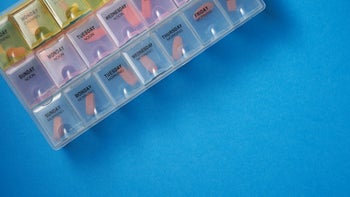
Can an Ultrasound Detect Breast Cancer?
Key takeaways:
A mammogram is the best way to screen for breast cancer. But an ultrasound can help with diagnosis — like when a mammogram shows an abnormality that could be cancer.
An ultrasound is not the first-choice screening test for breast cancer because it often leads to “false positive” results. This means it can pick up on something that looks like breast cancer when it actually is not.
An ultrasound is more likely to be helpful when someone has dense breast tissue, high risk for breast cancer, or a breast lump that’s more likely to be something other than cancer.

Many women are familiar with mammograms as the go-to test to screen for breast cancer. But what if that mammogram shows something abnormal? Or what if you feel a new lump? If you are in this situation, your provider may recommend an ultrasound to take a closer look.
When it comes to possible breast cancer, it can be confusing to understand the different testing options and know which one is best for you. We’ll explain the difference between mammograms and breast ultrasounds and which one is best to detect breast cancer in your particular situation.
Ultrasounds vs. mammograms: What is the best way to test for breast cancer?
To answer this question, it helps to understand what it means to “test” for breast cancer. Some tests are better for screening, and other tests are better for diagnosis.
Screening
Screening looks for any health condition before there are signs or symptoms. A good screening test picks up on abnormalities you want to know about — like developing breast cancer — but not the ones that don’t matter — like a normal cyst.
Mammograms are better than ultrasounds to screen for breast cancer. Here’s why: If ultrasounds were used for routine screening, they would lead to a lot of “false positives.” These are cases where the ultrasound results suggest there could be a tumor when there isn’t one there. This would lead to unnecessary worry and extra testing — like breast biopsies — only to find out nothing was really wrong.
Diagnostic testing
Diagnostic testing is useful when more information is needed to confirm a suspected diagnosis. In other words, it helps when there are signs and symptoms of a condition or after a screening test finds something. This is where ultrasounds come in — they’re more helpful for diagnosis rather than screening. They’re useful when someone feels an abnormal lump in their breast or a mammogram shows an area that could be breast cancer.
When are ultrasounds useful for breast cancer?
An ultrasound is actually a little bit better than a mammogram at detecting early breast cancer cases. This means they’re a good test to gather more information if there’s reason to believe someone might have cancer.
Ultrasounds can help with diagnosis in many situations, including:
Abnormal breast mammogram: An ultrasound can help when a mammogram shows an abnormal area in the breast, but it’s not clear if it’s cancer. This is particularly true if someone has dense breasts. A mammogram’s X-rays can sometimes have a hard time getting through dense tissue. So if there’s any question after a mammogram that a cancer could be hiding in dense breast tissue, ultrasounds are often the next step.
Evaluation of a breast lump: Not all breast lumps are cancerous, and ultrasounds can help figure out exactly what kind of lump it is. This can be particularly helpful in younger women, when the lump is likely to be something other than breast cancer. Other noncancerous causes of breast lumps include abscesses, cysts, and noncancerous tumors.
Breast biopsy of a suspicious breast lump: Ultrasounds can help pinpoint the exact location of a lump so a provider knows where to direct the biopsy needle.
Evaluation of people at high risk for breast cancer: An ultrasound plus a mammogram can help find more breast cancers than a mammogram alone in certain groups of people.
Ease of access and safety: An ultrasound may be the best option in areas where they’re easier to access than mammograms. And an ultrasound may be safer in certain cases — like when someone is pregnant or breastfeeding — because it doesn’t use any radiation.
Other imaging tests for breast cancer diagnosis
When it comes to breast cancer, ultrasounds are better for diagnosis than for screening. But they’re not the only way to diagnose breast cancer. There are two other imaging tests that can diagnose breast cancer:
Diagnostic mammogram: In addition to screening, mammograms can also diagnose breast cancer. But the test is done differently when it’s used for diagnosis. A diagnostic mammogram may focus more on a particular area or take extra pictures. It usually takes longer than a screening mammogram.
MRI: A breast MRI uses magnets and radio waves to create highly detailed images of the breast. Like an ultrasound, an MRI is not the first-choice test to screen for breast cancer because it can lead to a lot of false positives. But it’s sometimes preferred for women who have a high risk for breast cancer. It can also help figure out the size of a cancer that a mammogram has already detected.
The best diagnostic test for you depends on many factors. This includes your age, risk of breast cancer, and what your breast tissue looks like on the initial screening test or exam.
But whenever a diagnostic mammogram, ultrasound, or MRI suggest breast cancer, the final step in the diagnosis is usually a breast biopsy. This is a procedure that collects a small sample of the abnormal breast tissue so an expert can examine the cells under a microscope.
How are most breast cancers found?
Screening mammograms find most breast cancers. This is because mammograms can pick up early cancers before a provider can feel them on a physical exam. But breast self-exams still play an important role in finding cancer.
A national survey from 2011 reported that over 40% of cancers were first found by breast self-exams. These were then followed by a mammogram to evaluate the lump.
How to prepare for a breast ultrasound
If you’re preparing for a breast ultrasound, you may feel worried or scared, and that’s normal. But an ultrasound is actually a quick and easy test. And it’s usually more comfortable than a mammogram.
Here’s what to expect with a breast ultrasound:
A technician who is trained in ultrasounds usually does the test in a dark room.
You’ll likely be lying down for the exam. The technician may ask you to change positions throughout the exam to help them get the best view.
The ultrasound does not hurt. The technician will apply some gel onto the skin (it feels like petroleum jelly) and then use the gel to help the ultrasound probe glide easily over the skin. They may need to apply a little pressure to the breast to get a good image, but this usually doesn’t cause much discomfort.
The technician is trained in performing ultrasounds but not in interpreting the images. So don’t worry when they can’t give you an answer right away. They’ll save the images so a trained provider (a radiologist) can interpret them. It may take a couple days to get your results.
If you have any questions or concerns about your testing, don’t hesitate to ask your provider. They’re there to help and guide you through the process. And talking with your loved ones about how you’re feeling can also help while you’re waiting for testing and results.
The bottom line
Mammograms are the best screening tool for breast cancer in women over age 40. But ultrasounds play an important role in breast cancer diagnosis, too. Your healthcare provider may recommend one in certain circumstances, like after an abnormal screening exam, when an MRI is not feasible, or if your lump looks like something other than breast cancer. No matter what type of test you get, it often takes several different tests to confirm a diagnosis of breast cancer.
Why trust our experts?


References
American Cancer Society. (n.d.). Non-cancerous breast conditions.
American Cancer Society. (2022). Breast MRI.
Centers for Disease Control and Prevention. (2021). What are the risk factors for breast cancer?.
Chen, H. L., et al. (2021). Comparison of the sensitivity of mammography, ultrasound, magnetic resonance imaging and combinations of these imaging modalities for the detection of small (≤2 cm) breast cancer. Medicine.
Guo, R., et al. (2018). Ultrasound imaging technologies for breast cancer detection and management – A review. Ultrasound in Medicine and Biology.
Harada-Shoji, N., et al. (2021). Evaluation of adjunctive ultrasonography for breast cancer detection among women aged 40-49 years with varying breast density undergoing screening mammography: A secondary analysis of a randomized clinical trial. JAMA Network Open.
Lee, C. H., et al. (2010). Breast cancer screening with imaging: Recommendations from the Society of Breast Imaging and the ACR on the use of mammography, breast MRI, breast ultrasound, and other technologies for the detection of clinically occult breast cancer. Journal of the American College of Radiology.
Madjar, H. (2010). Role of breast ultrasound for the detection and differentiation of breast lesions. Breast Care.
Roth, M. Y., et al. (2011). Self-detection remains a key method of breast cancer detection for U.S. women. Journal of Women's Health.
Sood, R., et al. (2019). Ultrasound for breast cancer detection globally: A systematic review and meta-analysis. Journal of Global Oncology.

























